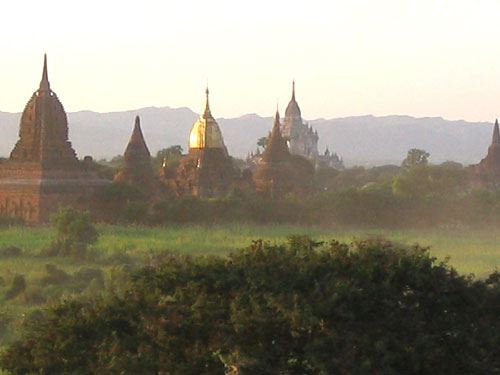
Bagan, a historic capital of Myanmar, known as the City of 4 Million Pagodas, is the richest archaeological site in Asia. It is in Bagan that Buddhism struck deep roots, and art and architecture attained peaks of achievement. Located some 300 miles from Yangon, Bagan stands on the east bank of the Ayeyawaddy, commanding the central plain of Myanmar in a setting which includes the great river flowing north to south and a network of paths and tracks. There are sandstone hills, an abundance of sand and river shingle, and a firm soil of stable bearing capacity. Bagan's climate is tropical and is generally hot and dry throughout the year. Winter time is ideal to visit as from November to February, day temperatures hover round 30°C and falls to 10°C at night. Rain is heavy and frequent between June and October. Its early history is unclear although chronicles relate that Bagan was formed from 19 villages. The most outstanding figure in its history is Anawrahta (1044-1077) who unified the country politically and culturally. He brought back to Bagan the Pali scriptures of Theravada Buddhism and set about building the awe-inspiring pagodas and temples which we still see today. His successors upheld this tradition for more than 290 years, covering an area of 16 sq miles with religious structures which number 2,217 in a recent list of the Department of Archaeology. Bagan's inscriptions mention congregation halls, ordination halls, libraries, monasteries and others, generally of timber or brick, occasionally of sandstone.
Monday, April 07, 2008
Bagan: Myanmar city with 4 million Pagodas
Subscribe to:
Post Comments (Atom)
Explore more

Custom Search
No comments:
Post a Comment